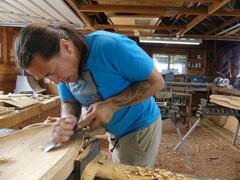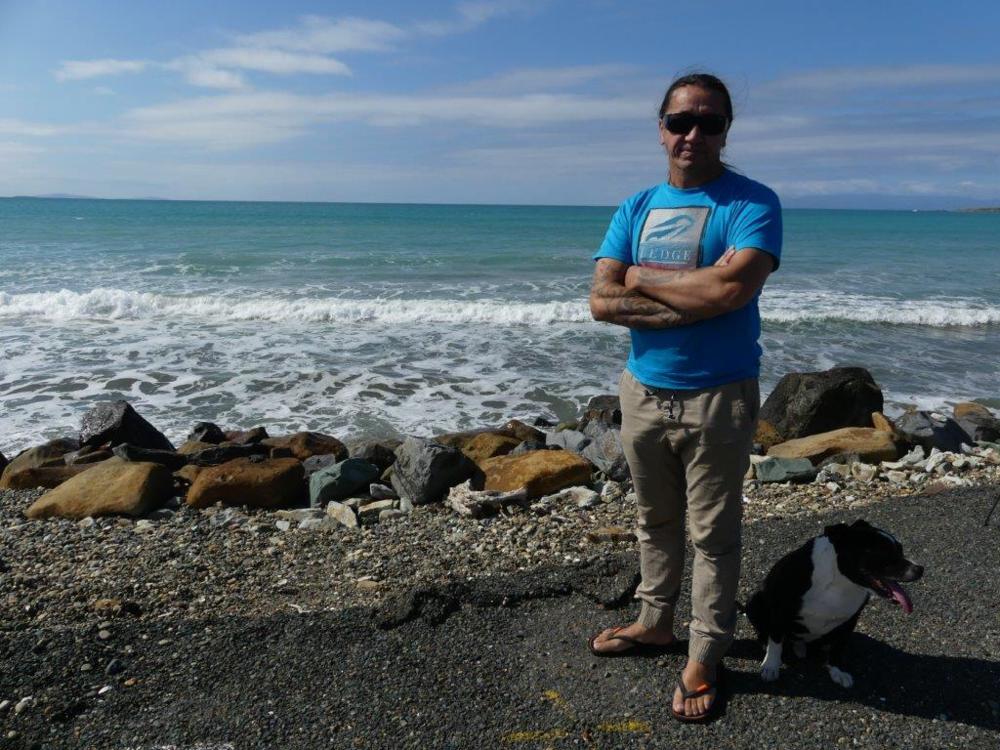Colac Bay carver bound for Antarctica
Claire Kaplan
06 February 2019, 1:50 AM
 James York hard at work in the Oraka Aparima Runaka carving shed in Aparima-Riverton, ahead of his team's deployment to Scott Base. PHOTO: Arielle Kauaeroa Monk
James York hard at work in the Oraka Aparima Runaka carving shed in Aparima-Riverton, ahead of his team's deployment to Scott Base. PHOTO: Arielle Kauaeroa MonkThe mingling of scientific and indigenous knowledge in the Antarctic will soon be represented in the form of an entrance way, thanks in part to carver James York of Colac Bay.
The work will be one of the first examples of traditional Maori carving on the icy continent.
The project is part of a five-year programme led by NIWA, and offers a Maori knowledge perspective to the scientific monitoring research being conducted in the Ross Sea Marine Protected Area.
Landcare Research ecologist Priscilla Wehi said Antarctica's ecosystems were key indicators of climate change, and the programme led researchers to track climate change with two eyes — one using the strength of indigenous knowledge and world views, and the other eye with the acute sight of scientific research.
Mr York (Ngati Wai, Ngai Tahu) said he was asked to be part of the project around nine months ago, and had been working steadily on the top of the doorway, called a pare, for the last 10-12 weeks.
The entrance way would be finished once he and and his carving partner, Poutama Hetaraka from Whangarei (Ngai Tahu, Nga Puhi), arrive in Antarctica this week and get inspired by the landscape.
Mr York said the symbolism of the carving referenced an indigenous view on the climate: the impact of the lunar cycle on the seasons, but also how the climate was in a "wee bit of trouble" due to climate change.
"From an indigenous view, the moon was more of a guide of the seasons and how everything worked — especially with navigational stuff and collecting seasonal foods. Whereas I think a lot of people are finding now things are a wee bit out of kilter. The seasons seem to be... changing and everything's getting hotter."
For Mr York, who lives on Colac Foreshore Road, it's easy for him to see the daily effects of climate change.
Rising sea levels and increasing king tides have caused coastal erosion to the road, leading to a section being closed off.
"That's what I'm most interested in getting more familiar with while we're down there. How is what's happening in Antarctica affecting the sea and therefore, the rest of the world?"
"And that's what we want to question and talk about with our whakairo. It's a wero (challenge) really. What are we actually doing about this problem of climate change?"
Mr York said the carving also served as a call for global political action.
"It might be time to act and do something before we sort of destroy everything."
Mr York and Mr Hetaraka left for Antarctica yesterday, Februrary 6, and will be there for more than two weeks.

James York with his dog, Mana, stands on Colac Foreshore Road, in front of the eroded shoreline just up from his whanau marae and home. PHOTO: Arielle Kauaeroa Monk